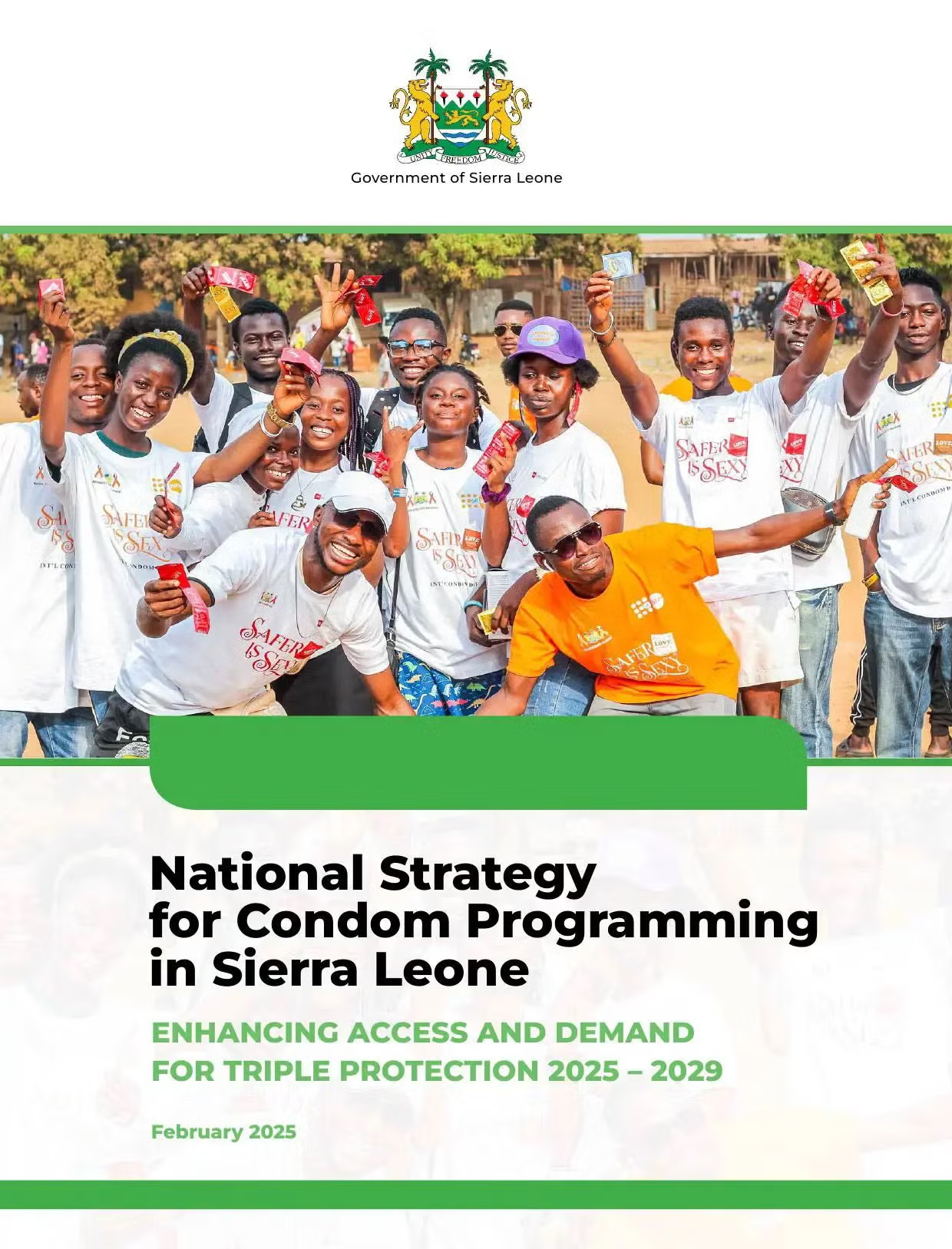The Ministry of Health through the National AIDS Secretariat, has developed the Strategic Operational Plan for Condom Programming in Sierra Leone with a focus on reinvigorating condom use to ensure “uninterrupted access to male and female condoms and lubricants for Key Populations, young people and the general population.” Condom use in the country was estimated at 7 per cent and 23 per cent of women and men respectively who had sexual intercourse with non-regular partners. The primary goal of the strategic operational plan is to enhance access and utilization of male and female condoms, supporting national efforts to reduce the transmission of sexually transmitted infections (STIs), including HIV, and unintended pregnancies, for all sexually active individuals.
The development of the condom strategy was an all-inclusive and participatory process with all key stakeholders including policy formulators, Government Agencies, Implementing Agencies, the donor community, non-governmental organizations (NGOs), community-based organizations (CBOs) and beneficiary groups at the national and subnational level among others.
The process involved a review of literature and documents, collation of data, Key Informant Interviews and Focus Group discussions at the national and subnational level.
As the country geared up to reinvigorate its condom programme, there was a felt need for a strategic shift in programming to redefine the role of condom use. These key strategic shifts include:
1. establishing a vibrant national coordination platform to enhance collaboration across sectors
2. adopting a people-centred approach that focuses on the needs and preferences of different population groups
3. promoting the triple protection benefits of condoms (against HIV, STIs and unintended pregnancies)
4. generating demand through enhanced social and behaviour change communication (SBCC) and information platforms across the country
5. improving supply chain systems to ensure that condom availability meets the demand
6. strengthening data management systems to enable evidence-based decision-making and informed programme implementation
The full implementation of the plan is expected to increase condom use by 50 per cent and to significantly bring down the rate of transmission of STIs, HIV and unintended.





